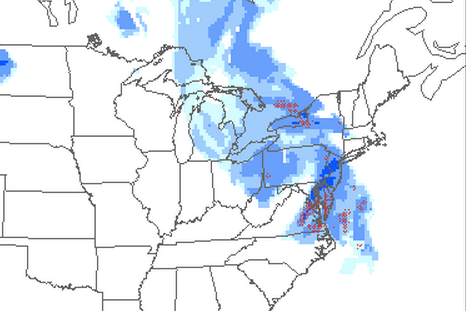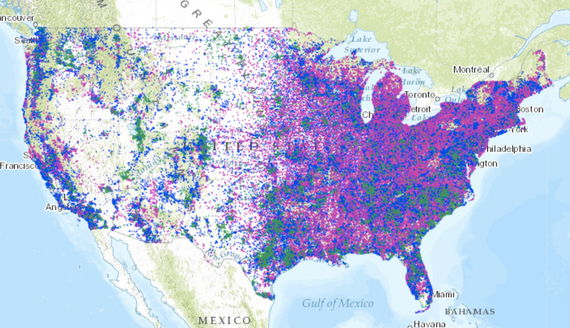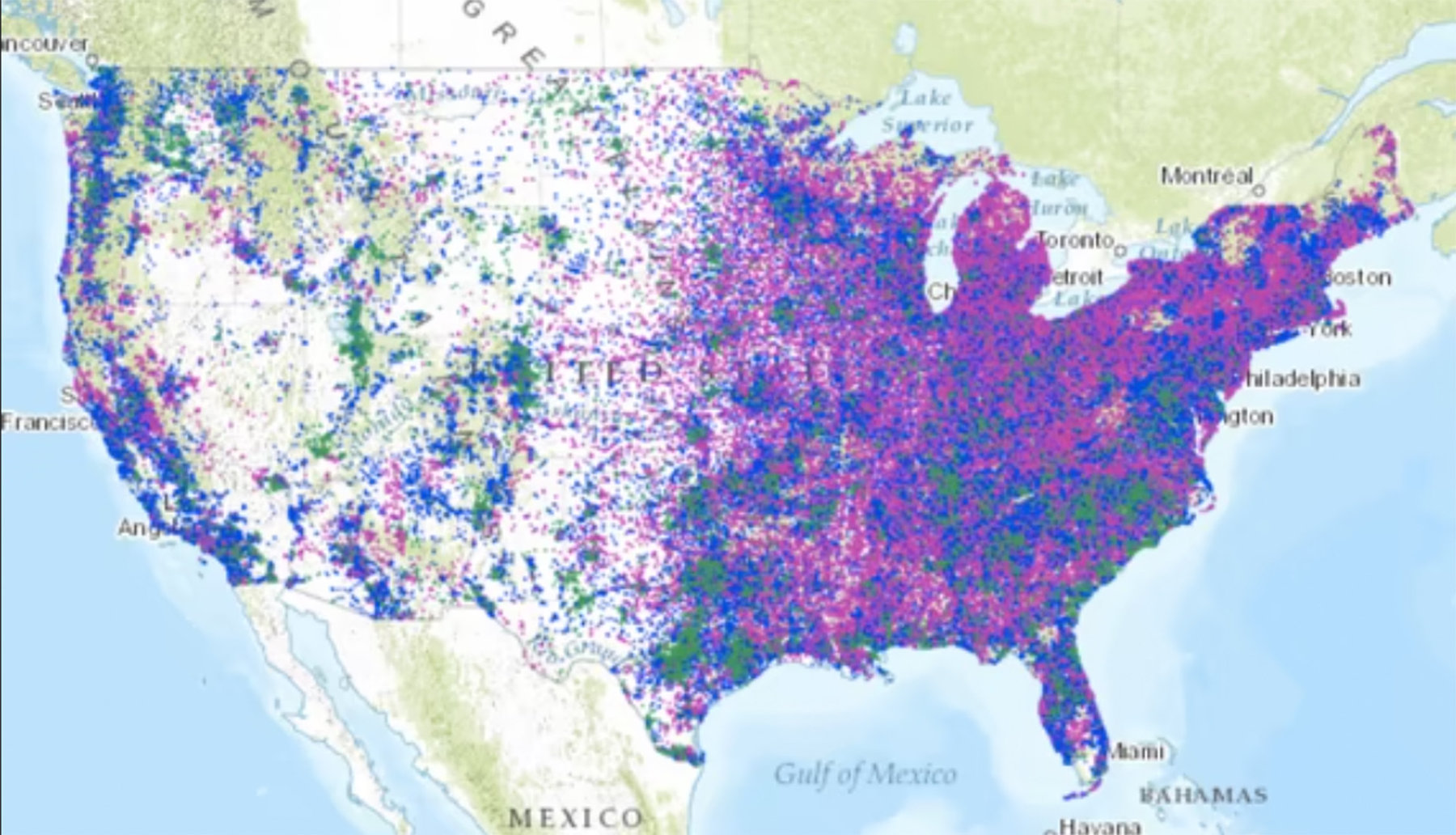I have an article about Greenville, South Carolina, and some other cities, just being wrapped up for the April issue of the magazine. Whenever the snow and wintry storms stop rolling through the eastern half of the country, which should be soon, we’ll resume our travels, again headed south.
The watchword for this America-by-small-plane journey has been: there’s no place we “have” to be, so there’s no reason to take off when there is weather to worry about.

So for the evening, two intriguing bits of data on the main question we’re pursuing in America as we once did in China: why certain communities are proving resilient in tough times, and whether their successes are purely idiosyncratic or offer clues that might be applied elsewhere.
Pressure comes in two varieties: rising, and falling. The green dots on the maps are the neighborhoods and cities expected to grow rapidly by 2017; the blue shows “average” growth rates; and the magenta dots show areas that people are leaving. You can zoom the map in and out and pan to any part of the country, to find patterns that I find extremely interesting. For instance, here is a screenshot of the big-picture view, showing what is happening especially in the settled areas east of the Rockies.

Again, the pinkish dots are counties or neighborhoods that are static or losing population as the whole nation grows, and green is the reverse. If you zoom in on the interactive map at top, you will find a lot of instructive regional patterns, about which we’ll have more to say.
Item two is a report earlier this month from the Endeavor organization, which supports entrepreneurs around the world. It surveyed people who had started and built high-growth, usually high-tech new businesses — the same kind of people we’ve been looking for and describing in Vermont and South Dakotaand inland California and South Carolina. It tried to identify why they built their businesses where they did.
You can read the whole results here (and Richard Florida’s analysis for Atlantic Cities here). The point that resonated with me is that the main variables had almost nothing to do with what we usually discuss at the national level, from tax rates to regulatory breaks. Instead they were overwhelmingly about the features we’ve heard time and again from mayors, chambers of commerce, newspaper editors (yes, they still exist and are informative), and school superintendents. These are: whether a city is an attractive place to live, whether young people want to move there, whether they will find other people like them there, whether they will want to stay there as they start families. People think of Parks and Recreation (for the record, I am a fan) as a putdown of flyover life. But according to this study, it’s closer than much Beltway talk to what matters about our future.
The study’s executive-summary portion was:
- Entrepreneurs at fast-growing firms usually decide where to live based on personal connections and quality of life factors many years before they start their firms.
- These founders value a pool of talented employees more than any other business-related resource that cities can offer.
- Access to customers and suppliers is the second most valuable business-related resource that cities can provide, according to these entrepreneurs.
- The founders in our study rarely cite low tax rates or business-friendly regulations as reasons for starting a business in a specific city.
The whole thing is concise and provocative, and corresponds to what we’ve heard on our trips so far.
If we were planning on flying tomorrow morning, I wouldn’t be up this late, and I wouldn’t be having a beer right now. The endless winter has some benefits.




